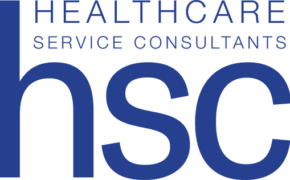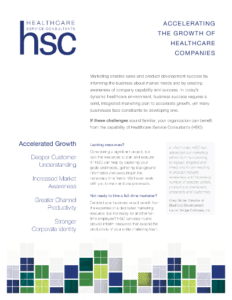Table of Contents
In this first blog of our series, Content Marketing in Healthcare IT, we will explore:
- The role of content marketing within a broader healthcare IT product marketing strategy
- The various forms that it can take
- How it can generate awareness, build credibility, and engage with your target audience
Content marketing is the cornerstone of every successful marketing effort. Great content resonates with your target audience and drives interest in your products. It is relatable and informative. It clearly identifies how your solution addresses potential buyers’ top problem statements and objectives.
In healthcare, developing great content can be particularly challenging. The complex nature of clinical workflows and solutions is one obstacle. A conservative (and sometimes skeptical) nature of the healthcare buyer is another.
1. What Is Content Marketing, and What Is It Not?
A common mistake made by many product marketers is confusing content marketing with advertising. However, there are distinct differences. Advertising strives to directly promote a specific brand or product. Content marketing is more subtle. In simple terms, content marketing is the creation and distribution of digital content–intended to stimulate interest, educate, and foster relationships with your target audience.
In the healthcare world, this typically starts with providing buyers educational materials. These assets highlight key problem statements. They frame pain points in a way that helps potential buyers recognize and understand their scope and potential impact. The overall goal is to:
- paint a compelling vision of the future in which problems are overcome (or not)
- discuss potential solutions
- present use cases and proof points where similar healthcare organizations have realized success
In doing so, you relate to your potential buyers. You’ve demonstrated that you understand their unique problems and needs. The more subtly this is executed, the better for building credibility. By implying your solution—rather than directly promoting it—you avoid generating the feelings of skepticism that often result from direct advertising. And, you generate curiosity within the reader that will drive them towards (rather than away from) more content.
2. Primary Forms of Content Marketing in Healthcare IT
There is no one-size-fits-all answer to the appropriate format or length of your content. The type of content used depends upon the purpose it intends to serve and the context within which it will be presented. There are two primary forms of content used in content marketing:
2.1 Short Form
As its name suggests, short form content is quick and easy to consume. It provides high-level information in an easily digestible format. Rather than covering a topic in-depth, it captures attention, generates interest, and drives your audience to your website and other content to learn more. Common examples of short-form content include:
- website messaging
- social media posts
- blogs
- emails
- news articles or press releases
- short videos (two minutes or less)
- and more
2.2 Long Form
Contrary to short-form content, long-form provides more detailed content. Its goal is to educate and inform consumers about a specific topic or group of related topics. It engages your audience at a deeper level. In both written and video forms, long-form assets include:
- white papers
- ebooks
- detailed case studies
- customer newsletters
- webinars
- virtual events
- longer educational or instructional videos
Both forms can be distributed using similar mediums and channels. Deciding which of each will be most effective requires a strategy that considers the size, nature, behaviors, and preferences of your audience.
3. Developing a Content Marketing Strategy and Plan
Having a plan for building a repository of relevant content and determining how best to share it is just as important as having the content itself. Consider where your audience looks for information and how they prefer to consume content (reading or video).
The depth and complexity of messaging or topics should inform:
- what you develop (short or long form)
- where it should live (on your website or with a third party)
- how it will be distributed (social media, email, publications, etc.)
Ultimately, your content is a catalyst for driving traffic to your website. Regardless of where you host it or how you distribute it, content should always provide an easy-to-follow path back to your website. This gives interested prospects an opportunity to learn more or reach out. In future blogs, we will explore specific content development and distribution strategies in greater detail.
4. We Help with Your Content Marketing
Developing great content marketing in healthcare IT should effectively communicate with and educate your target healthcare personas in a way that appeals to and resonates with them. This will drive interest in your products, traffic to your website, and build much-needed credibility around your brand.
Our team of healthcare IT product marketing experts are well-versed in content marketing strategy development and execution. We can help you identify the topics, formats, and mediums that will resonate best with your target audience. And, we can assist in building a diverse and comprehensive plan for distribution and lead generation. Contact us to learn more.
Photo by Artem Beliaikin on Unsplash




